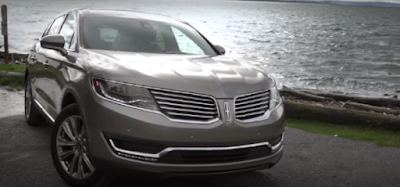INEXPENSIVE
gasoline has fueled sales of the crossovers and sport utility vehicles
that Americans love. That’s good for the automakers’ bottom line, but it
also presents a challenge as fuel economy standards get stricter.
What’s a company to do? Build something like the BMW X5 xDrive40e, a plug-in hybrid.
It
would appear that this technology is the way to go for the foreseeable
future, since batteries that take cars hundreds of miles are expensive
(looking at you, Tesla) and there is no refueling infrastructure yet in
place for cars using hydrogen fuel cell technology.
With
a pure battery range of 14 miles, the 40e is no Volt. It charges in
three hours on 220-volt current, seven hours on 110. It can reach 75
miles an hour on battery power alone; the gas engine assists from there.
It does not have to be charged up to operate, but that defeats the
purpose, right?
BMW’s
eDrive consists of a turbocharged 2-liter, 4-cylinder engine assisted
by a 111-horsepower alternating-current electric motor tucked into the
8-speed transmission housing.
In
total, there are 308 horses and a healthy 332 pound-feet of torque. The
lithium-ion battery pack is beneath the cargo floor where in the X5
35i, the 40e’s fully fossil-fuel sibling, the third row of seats would
live. The 40e is strictly a five-seat affair.
There
are three drive modes: Max, Save and Auto. Max provides pure electric
power; Save forces gas operation and even charges the battery a bit.
Most owners will use Auto, in which the 40e behaves much like any
hybrid. The difference is that the smooth electric-to-gas transition
happens at higher speeds, up to 45 miles an hour.
Impressively, the 40e drives much like a standard 35i.
The
brake pedal feels a touch disconnected, common with hybrids. From
inside the cabin, the quiet 4-cylinder engine seems as if it’s in the
next county.
Quicker
than a Prius, the 40e bolts from zero to 60 miles an hour in 6.5
seconds with a standard all-wheel-drive system that’s always active. It
drives well, though at 5,220 pounds, it’s around 430 pounds heavier than
the 35i, and that mass is felt. The hippopotamus ballerinas from
“Fantasia” come to mind. It’s an S.U.V., not an M3.
Fuel
economy depends on how it’s driven and how frequently it’s charged. If
you understand the government rating of 56 miles per gallon equivalent,
you’re smarter than average. I saw everything from 57 m.p.g. (driving
carefully in urban conditions) to 21 m.p.g. with a hard foot and a spent
battery. My total average for the week was 31 when I plugged it in
nightly.
Whatever
the fuel economy, occupants will enjoy the interior. Soothing accent
lighting bathes the entire cabin. Seats are bolstered for a wide range
of posteriors. The 40e is most efficient when a destination is set on
the navigation system (by drawing letters and numbers on the iDrive
function knob) since the eDrive takes into consideration the topography
of the route. Be aware that the drivetrain turns off if you open the
front door. It’s a safety feature.
In
the rear, a low-profile drive shaft tunnel keeps the back seat
spacious. Two adults can stretch out; three smaller passengers should be
comfortable. The seats split 40-20-40. The battery pack eliminates the
cargo area available in the 35i without the back seat option, but the
trunk space remains the same size.
Today’s
cheap gas makes it tough to break even financially. The car starts at
$63,095 (the version I tested was $71,995) and the eDrive hybrid system
is $5,000 more. A $4,668 federal tax credit nearly covers that bill, but
don’t forget the charger installation. Still, if plug-in hybrids are
the future of efficiency, we could all do a lot worse than drive
something as well engineered as the X5.












0 comments:
Post a Comment